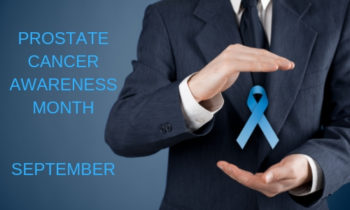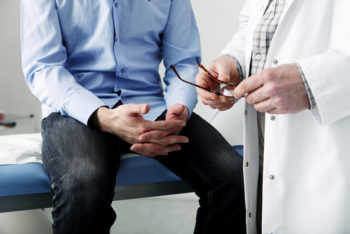 4 RISKS + 4 SYMPTOMS + 2 VITAL TESTS = AWARENESS
4 RISKS + 4 SYMPTOMS + 2 VITAL TESTS = AWARENESS
Hello everyone and welcome to another FACTUAL FRIDAY. As most of you know by now, September is PROSTATE CANCER AWARENESS MONTH and the perfect time to review the risks AND symptoms of a cancer that affects one out of every seven men.
In fact, prostate cancer is the second most common cancer for men around the world. The good news, however, is that prostate cancer also is a disease from which most men will recover.
Of course, the key to surviving prostate cancer is the same as it is for almost every other cancer. And, that is EARLY DETECTION.
But, in order to detect a cancer early we need to understand what the risks are, what symptoms to look for and what screening procedures are required.
So, let’s start with 4 BASIC RISK FACTORS for PROSTATE CANCER:
- AGE. Age is a major risk for developing most cancers, including prostate cancer. This cancer typically strikes men over the age of 60 with the average age of a prostate cancer patient around 70.
- FAMILY HISTORY. Heredity and Genetics play an extremely important part in the development of this cancer. Men who have a first-degree relative (father, sibling or child) who was diagnosed with prostate cancer before the age of 65 are twice as likely to develop this cancer than other men. It has been estimated that 5 to 10 percent of all prostate cancers are linked to a family predisposition for the disease.
- ETHNICITY. African American men are more likely to develop prostate cancer than Caucasian men. And, without early detection, prostate cancer is more lethal for African American men than for Caucasian men.
- LIFESTYLE. The development of most cancers is influenced by inadequate exercise and poor diet. The misuse of alcohol and the use of tobacco products also will contribute to the development of many cancers, including prostate cancer.
Now let’s review 4 COMMON SYMPTOMS of PROSTATE CANCER:
- CHANGES IN URINATION. A change in the frequency, urgency or flow of urination may indicate the presence of prostate cancer.
- INABILITY TO ACHIEVE AN ERECTION. Most men experience erectile dysfunction at one time or another. But, if it continues for any length of time it could indicate a more serious problem, including prostate cancer.
- PAINFUL EJACULATION. Pain in ejaculation may indicate prostate cancer and requires an immediate examination.
- BLOOD IN URINE OR SEMEN. Blood in urine or semen can be caused by conditions that are not life-threatening. But, if it persists one should seek medical advice to rule out prostate cancer.
Finally let’s review the 2 ESSENTIAL SCREENING PROCEDURES for PROSTATE CANCER:
- PROSTATE SPECIFIC ANTIGEN BLOOD TEST or PSA. Protein specific antigen is a protein produced by cells in the prostate gland. The PSA is a simple blood test that measures the level of this protein. If the results of this test show an elevated level of PSA, the presence of prostate cancer may be indicated.
- DIGITAL RECTAL EXAM or DRE. This is another easy exam that can be performed in a physician’s office. It involves a manual inspection of the rectum, enabling the physician to feel for any lumps, bumps or abnormalities in or near the prostate, which could indicate prostate cancer.
Now, the frequency with which these tests are conducted will depend upon the patient’s medical history and level of risk – and will be determined by the patient in concert with his physician.
Understanding the personal risks and the common symptoms associated with prostate cancer will enable one to take a PROACTIVE APPROACH to personal healthcare.
Think of it this way. Cancer care is like your favorite sport: The BEST DEFENSE is a STRONG OFFENSE. So, consult with your physician. Take advantage of the available screening procedures. And, come up with a plan that will offer you the best protection.
DON’T BE SURPRISED GENTLEMEN – BE PREPARED!
There is no better time to do this than right now during PROSTATE CANCER AWARENESS MONTH. And, ladies be sure to share this information with the men in your life!
Thanks again for joining me everyone. Until next time stay in GOOD HEALTH and . . .
TAKE THE COURSE AND TAKE CHARGE!



Leave a Comment